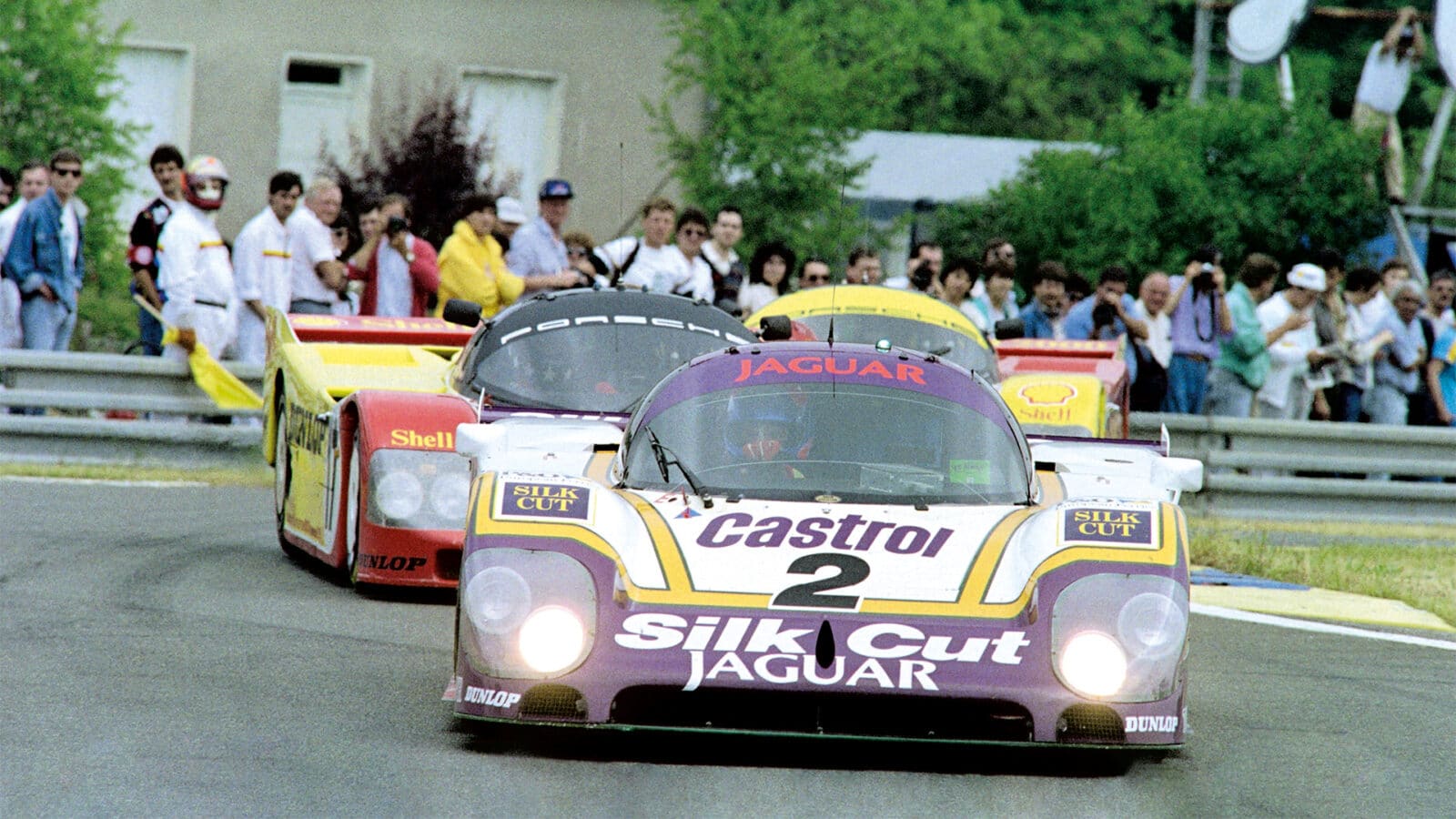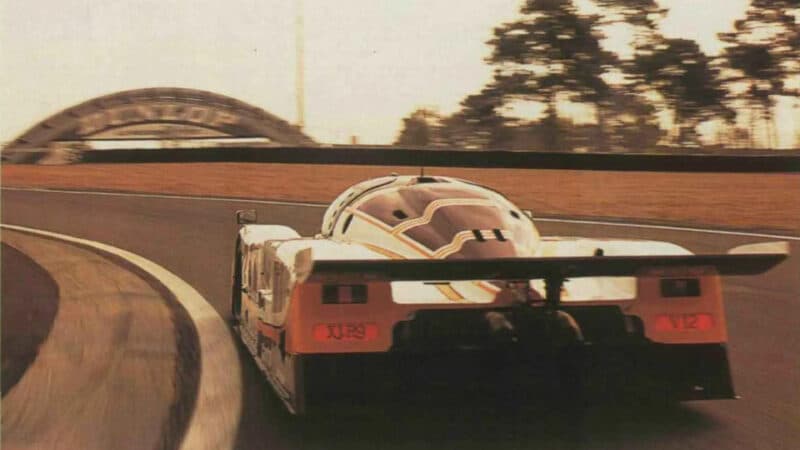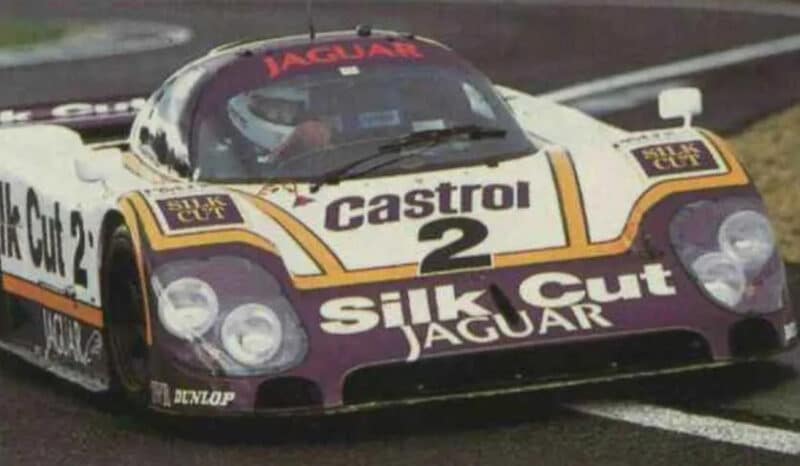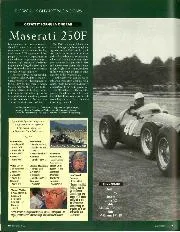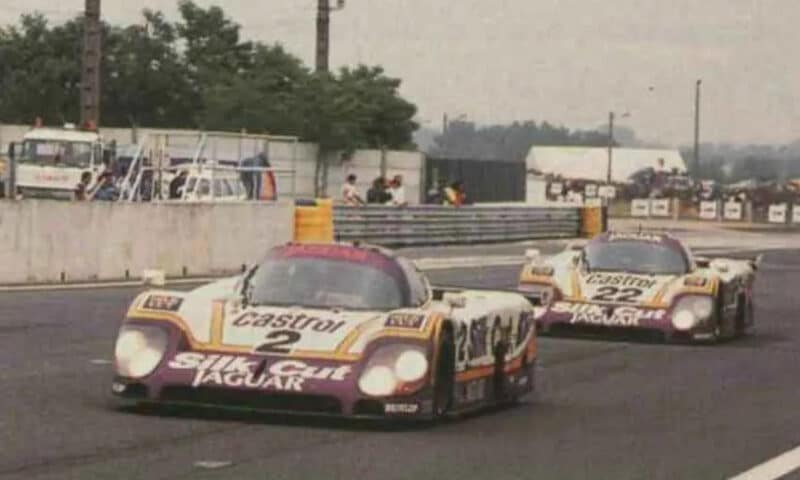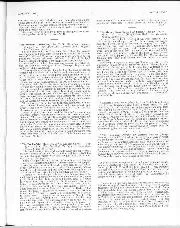Seeing that car crawl up the pit lane and out once more to the Dunlop Bridge was as poignant a sight as I’ve seen on a track test and the dozens assembled for this event, people from the staff of the Trust, Jaguar, Le Mans and this magazine, all knew it.
It took an age for Win to appear again and when he did the Jaguar was travelling painfully slowly. But he didn’t come in so there was still hope. Next time around the XJR-9LM was being worked rather harder, and third time around Win was flying, charging through the gears, belting through the curve at the end of the pit straight in fourth gear as if he’d never been away, never had his life saved here by this car’s immediately predecessor, the XJR-8, back in 1987. On the fourth lap he brought the car in. The door opened to reveal Win grinning as if he’d just won the race. “Mate, it’s perfect, just bloody perfect… Go see for yourself.”
The Jaguar XJR-9 was the third in the line of Tony Southgate-designed, TWR-built Group C racing cars. It is the most famous of the breed (thanks to that Le Mans win) but not the most successful, the XJR-8 winning nine championship rounds in ’87, compared to just six in ’88 for this type. The car is built around a carbon-fibre and Kevlar tub with carbon, Kevlar and glass-fibre bodywork. The aluminium V12 engine is based on that found in Jaguar road cars of the day but modified out of all recognition save the retention of just a single camshaft per bank and two valves per cylinder. Allan Scott developed the engine from part-machined blocks supplied by Jaguar using Cosworth pistons, Zytec management, Bosch fuel injection and a 12.0:1 compression ratio to produce 745bhp at 7200rpm. The entire weight of the 6995cc unit, including its AP Racing triple-plate clutch, was just 240kg.
